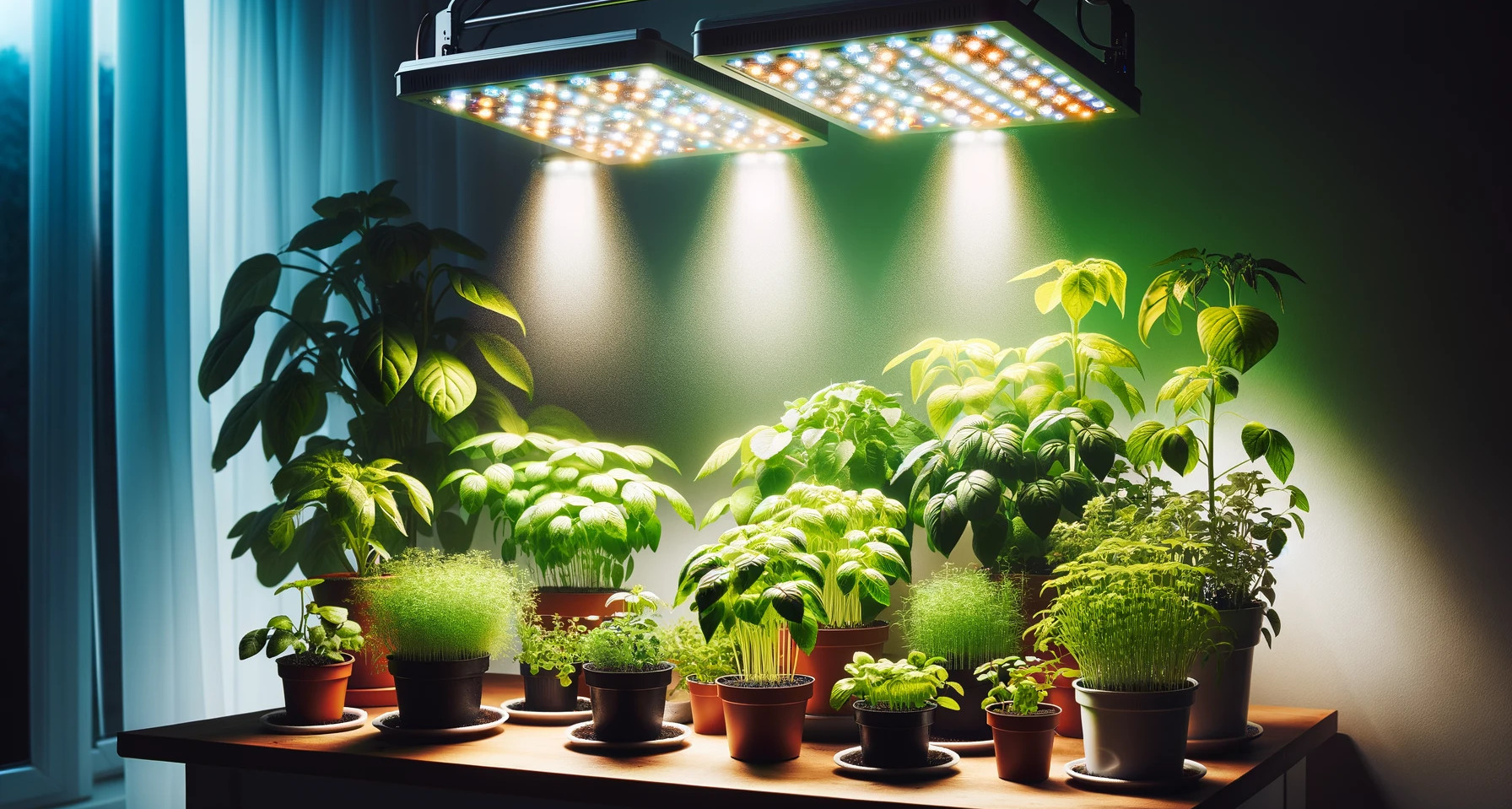Plants respond to grow lights as they would to the sun primarily because of the light’s spectrum and intensity. Here’s how this works…
- Photosynthesis:
Plants need light to perform photosynthesis, the process by which they convert light, water, and carbon dioxide into oxygen and energy in the form of glucose. This process primarily relies on light within the visible spectrum, especially in the blue and red wavelengths. - Light Spectrum:
Grow lights are designed to emit light in the wavelengths that plants most efficiently use for photosynthesis. The sun emits a full spectrum of light, but plants are most responsive to certain blue and red wavelengths. Many grow lights specifically provide these wavelengths, which is why plants can mistake them for sunlight. - Intensity and Duration:
The intensity and duration of light that plants receive can mimic the natural day cycle under the sun. Grow lights can be adjusted to provide a similar experience to natural sunlight in terms of how many hours a day they emit light and how intense that light is. - Plant Photoreceptors:
Plants have photoreceptors that detect light. These receptors, particularly phytochromes and cryptochromes, are sensitive to the light that grow lights emit, triggering the same responses in the plant as sunlight would, such as growth direction, flowering, and other physiological processes.
By closely mimicking the key aspects of sunlight that plants rely on, grow lights allow indoor gardening and plant cultivation in environments where natural sunlight is limited or unavailable.
Growing plants at night
By utilising grow lights, gardeners and agriculturists can extend the growing hours of plants beyond natural daylight, enabling them to continue growing even at night. When these artificial lights replicate the essential wavelengths of sunlight needed for photosynthesis, the process by which plants convert light into the energy they need to grow and develop can continue. When natural sunlight fades, grow lights can take over, providing consistent and controlled light exposure. This allows plants to maintain their photosynthetic activities and growth rates around the clock, leading to potentially faster growth and increased productivity. This technique is particularly beneficial in controlled environments like greenhouses or indoor gardens, where the natural day-night cycle can be adjusted to optimise plant health and yield.
Household light bulbs
While LED household light bulbs can support some basic plant growth, they are not as effective as specialised grow lights designed for horticultural purposes.
However, if you’re growing low-light plants like some herbs or decorative foliage, a household LED bulb may suffice to provide a little extra light, especially if the plants are positioned close to the bulb. For more demanding plants or for serious indoor gardening, investing in grow lights with the right spectrum, intensity, and coverage is a better choice to ensure healthy plant growth.
Exposure duration
The duration of light provided to plants under grow lights should ideally match the plants’ natural growing conditions, which often means mimicking the longer daylight hours of summer for many species. Here’s how this works:
- Photoperiodism:
Many plants are sensitive to the length of daylight, a phenomenon known as photoperiodism. This sensitivity helps them determine when to germinate, grow, flower, and go dormant. Providing a summer-like long day can encourage growth and flowering in many species. - Growth Phase:
During their growth phase, many plants benefit from longer light periods. For example, a typical summer daylight period of 14 to 16 hours can stimulate vigorous growth, especially in young or fast-growing plants. - Flowering and Fruit:
Some plants require long days to initiate flowering and fruiting processes. Extending daylight hours can trigger these stages, particularly in plants that are day-length sensitive. - Adjustments:
While mimicking summer daylight is generally beneficial, it’s important to adjust based on the specific needs of the plants you are growing. Some plants may require shorter light periods to initiate flowering or to enter a rest phase.
By using grow lights to extend the light period, one can effectively simulate summer conditions, promoting healthier growth and potentially increasing yield in indoor gardening settings.
An early start
To give plants an early start to the season and ensure they stay on track for healthy growth, supplementing natural sunlight with grow lights can be highly beneficial. By extending the “daylight” hours with grow lights, gardeners can simulate the longer days of summer, encouraging plants to emerge from dormancy sooner and begin their growth cycle early. This additional exposure to light helps boost photosynthesis, leading to stronger, more vigorous plants. Especially useful in late winter or early spring when natural daylight is still limited, this strategy can significantly accelerate growth, allowing plants to mature earlier and potentially extend the growing season for better yields and more robust blooms.
